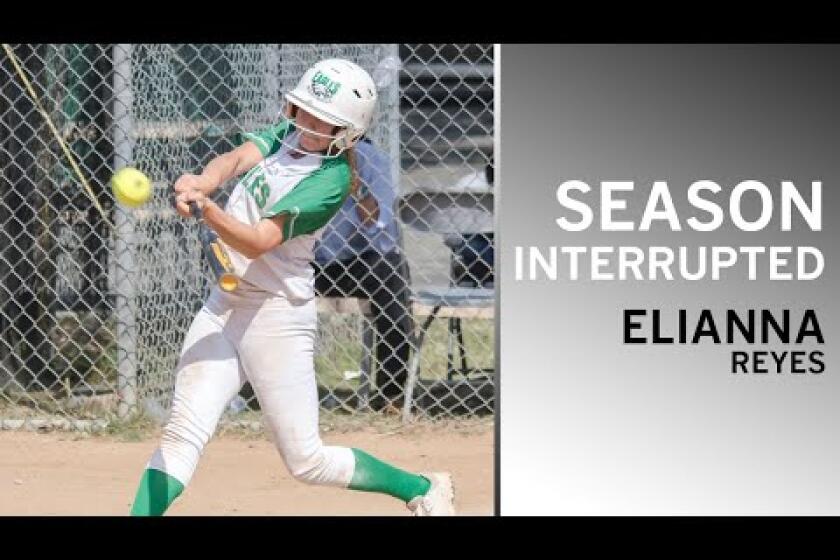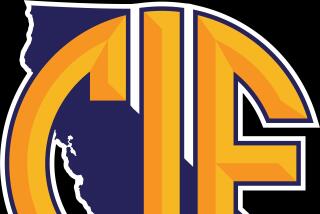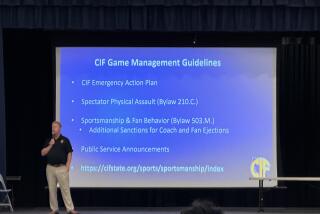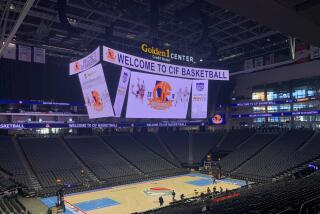CIF trying to develop plans for return to high school sports

Amid growing indications that the start of the high school sports season in California could be delayed until January because of the COVID-19 pandemic, Southern Section commissioner Rob Wigod said on Thursday that he believes a path forward will be ready to be announced by the end of this month.
“We have one chance to get it right,” he said.
The California Interscholastic Federation, which governs high school sports in the state, has been compiling information from school districts and private schools about when they plan to resume classes for 2020-21. After two months of discussions, the 10 section commissioners are scheduled to begin a three-day meeting on Tuesday. Coming up with viable contingency plans is a top priority.
Districts have been unable to answer whether students will be able to attend classes on campus, on line or in a hybrid version. “This will be a delicate dance with a thousand steps,” said Austin Beutner, superintendent for the Los Angeles Unified School District, on Wednesday,
The uncertainty has left the current sports calendar obsolete. Football practices were scheduled to start Aug. 3 with first games played on Aug. 21. Girls’ volleyball matches were scheduled to begin Aug. 15. Coaches and athletes, though, have had no access to their school athletic facilities since campuses were closed in mid-March. There are state stay-at-home orders and social distancing guidelines in place.
City Section representative Neil LaSala said after a state federated council meeting last month that he was left with the impression that high school sports would not return until January at the earliest because of the major challenges facing school districts.
Eagle Rock slugger Elianna Reyes and her mother each contracted the coronavirus, and it created a family scare.
“We have all options on the table but have not made any decisions with respect with when and how sports will return,” said Ron Nocetti, executive director of the CIF. “It’s premature to use the word ‘likelihood’ to any scenario as things change rapidly.”
But there’s a growing sense of urgency for the commissioners to start developing scenarios on how to proceed and acting on possible rule waivers to help parents, such as a financial hardship waiver of transfer rules or finding a solution to the requirement of athletes needing a physical to participate while doctor visits are limited.
Wigod made it clear that the No. 1 priority remains the “health and safety of student-athletes.”
“We all want to bring high school sports back,” he said during a 45-minute interview. “We all want to bring it back when it’s deemed healthy and safe. It has to be done right because we won’t get a second chance.”
Football could be moved to January in one scenario and basketball start in February in another. There would be three 12-week seasons. Some sports with easier social distancing procedures could be played in the fall.
Any plan could produce hardships, from sharing facilities to athletes losing out on traditional college recruiting opportunities.
“I believe that we will have fall, winter and spring sports during the 2020-2021 school year,” Wigod said. “That’s the commitment and focus I have and our organization has, and I believe we will be able to do it.”
More to Read
Get our high school sports newsletter
Prep Rally is devoted to the SoCal high school sports experience, bringing you scores, stories and a behind-the-scenes look at what makes prep sports so popular.
You may occasionally receive promotional content from the Los Angeles Times.








